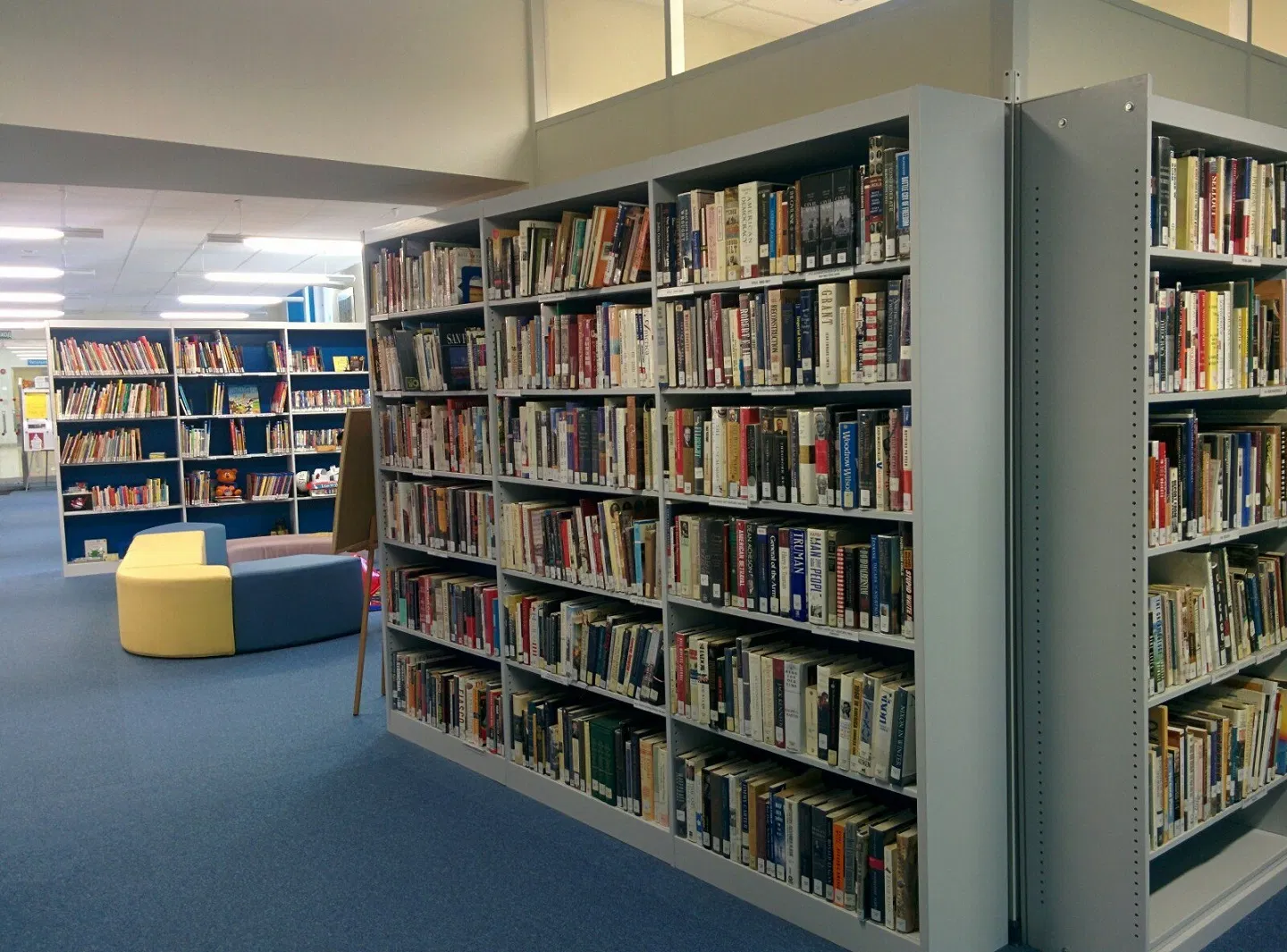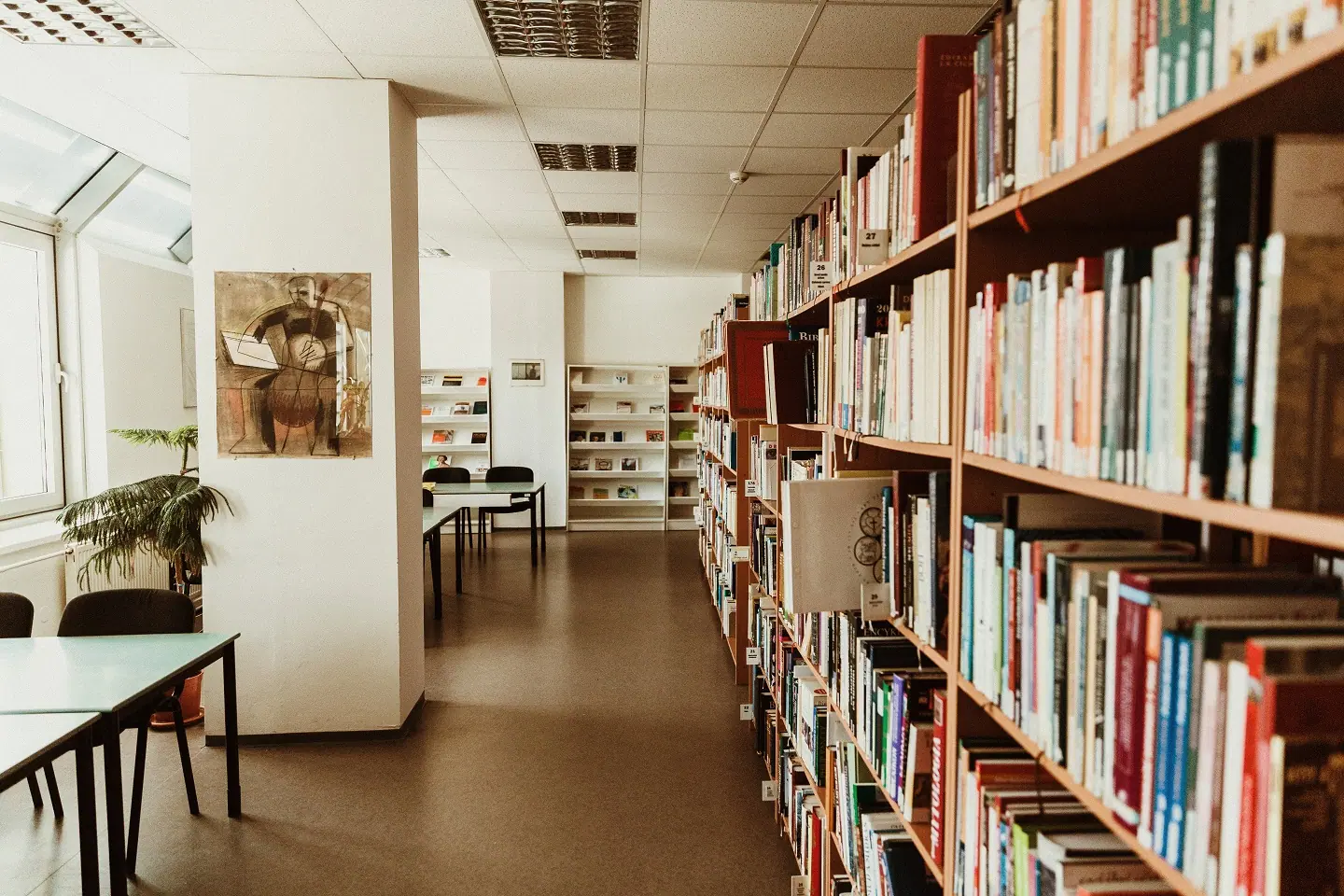Library Flooring: Creating a Serene Reading Environment

In the world of libraries, where knowledge meets serenity, every element plays a crucial role in creating an inviting and conducive environment for readers and researchers. While books, furniture, and architecture often steal the spotlight, there’s one unsung hero that quietly supports it all – library flooring. The floor beneath our feet may not seem significant at first glance, but upon closer inspection, it reveals its essential role in shaping the library experience.
A Foundation for Comfort

The importance of library flooring material becomes evident the moment you step inside. The tactile sensation of walking on a well-maintained floor creates a sense of comfort and security. It not only ensures a smooth and noiseless passage for patrons but also sets the tone for their visit.
Library flooring materials types vary from hardwood to carpet and vinyl to tile. Each choice carries unique benefits and considerations. For example, hardwood floors exude a classic and timeless charm, offering durability and easy maintenance. They withstand the test of time and can be sanded and refinished, making them a sustainable choice. On the other hand, carpet flooring provides warmth and acoustic benefits, reducing noise levels within the library. It also adds a cozy, inviting atmosphere, encouraging patrons to linger longer among the shelves.
Aesthetic Appeal of Library Flooring

Library flooring contributes significantly to the overall aesthetics of the space. The color, texture, and design of the floor can set the mood and theme of the library. A sleek, modern library might opt for polished concrete floors, while a historic library may choose intricate tile patterns to reflect its heritage.
The aesthetics of library flooring material extend beyond visual appeal. They encompass the psychological impact on patrons. A well-chosen flooring design can invoke a sense of tranquility, stimulate creativity, or promote focus. It’s an integral part of the library’s identity, aligning with its mission and values.
Tips: You can take a look at our flooring wholesale in San Jose and order online flooring or purchase what you need in person.
Library Flooring Durability and Maintenance
Libraries are high-traffic areas, and their floors endure constant wear and tear. The durability of library flooring is paramount. It must withstand not only the regular foot traffic but also the occasional heavy loads of book carts and equipment. A sturdy floor reduces the frequency of repairs and replacements, minimizing disruptions to library operations.
Proper maintenance of library flooring is equally crucial. Regular cleaning and upkeep ensure that the flooring retains its visual appeal and longevity. Different materials demand distinct maintenance routines. For example, hardwood floors require periodic refinishing, while carpet flooring necessitates vacuuming and occasional deep cleaning. Neglecting maintenance can lead to a shabby appearance and costly replacements.
Accessibility and Inclusivity

Library flooring plays a crucial role in ensuring accessibility and inclusivity for all patrons. It should be level, without abrupt transitions or obstacles, allowing wheelchair users, people with mobility impairments, and parents with strollers to navigate the space effortlessly. Furthermore, the flooring should have a non-slip surface to prevent accidents and injuries.
The choice of flooring materials can also impact individuals with sensory sensitivities. Some people may find hard, reflective surfaces uncomfortable due to noise and reverberation. In such cases, carpet or acoustic flooring can mitigate these issues, making the library a welcoming place for everyone.
Environmental Considerations

As sustainability gains prominence, some of the best library flooring material choices are evolving to align with eco-friendly practices. Sustainable floorings, such as bamboo, cork, and recycled materials, are gaining popularity in libraries worldwide. These choices reduce the library’s environmental footprint and contribute to healthier indoor air quality.
Additionally, some of the best library flooring options are designed with energy efficiency in mind. Radiant heating systems installed beneath the floor can provide warmth during colder months, reducing the need for traditional heating methods. This not only lowers energy consumption but also enhances patron comfort.
As we explore the world of best library floorings and its various types, it becomes evident that the choice of flooring material plays a pivotal role in shaping the overall library experience. The choice of flooring type can significantly impact the library’s atmosphere, functionality, and overall appeal. Let’s explore some of the most common types of flooring for libraries:
1. Carpet Flooring:
Carpet flooring is a popular choice for libraries for several reasons. Its most notable feature is its noise-reducing properties. Libraries are typically quiet spaces, and carpet helps absorb sound, creating a peaceful environment for reading and study. Additionally, the carpet provides a comfortable surface underfoot, making it inviting for patrons to sit, read, or study for extended periods. It’s a preferred choice for areas where patrons are likely to spend more time, such as reading corners and study zones.
However, the carpet does require regular maintenance, including vacuuming and periodic deep cleaning, to keep it clean and hygienic. High-traffic areas may require more robust carpeting to withstand wear and tear. Nevertheless, the comfort and acoustic benefits make it a popular choice in many libraries.
2. Hardwood Flooring:
Hardwood flooring exudes timeless elegance and is often chosen for libraries seeking a classic, traditional look. It’s known for its durability and can withstand heavy foot traffic for decades. Hardwood floors are somewhat easy to maintain and can be sanded and refinished to revive their appearance, making them a sustainable choice. They are particularly well-suited for historic or aesthetically pleasing libraries.
However, hardwood flooring can be more expensive to install initially compared to other options. It’s also susceptible to damage from heavy objects or moisture if not properly maintained. Additionally, hardwood floors can be noisy when walked on, potentially causing disruptions in quiet library spaces.
3. Vinyl Flooring:
Vinyl flooring is valued for its durability and resistance to wear, moisture, and stains, making it suitable for busy libraries. Vinyl flooring is s a cost-effective option, making it ideal for libraries with budget constraints. Vinyl can mimic the look of other materials like hardwood or tile, providing design flexibility. It’s also relatively low-maintenance, requiring regular cleaning but not refinishing.
4. Tile Flooring:
Tile flooring is admiringly durable and can resist heavy foot traffic without showing significant wear. Libraries can create unique and visually appealing designs using various tile patterns, colors, and textures. Tiles are easy to clean and sanitize, ensuring a clean and hygienic library environment. They are particularly well-suited for areas with high traffic, such as entrances and corridors.
On the downside, tiles can be hard and less comfortable for patrons who prefer to sit or read on the floor. Using rugs or carpeted areas can mitigate this issue. Some tile types may also have higher installation costs compared to other flooring options.
5. Sustainable Flooring Options:
Libraries committed to environmental responsibility may opt for sustainable flooring materials, such as bamboo, cork, or recycled materials. These options align with sustainability goals and often have low VOC (volatile organic compound) emissions, contributing to healthier indoor air quality. Many sustainable flooring materials are also durable, reducing the need for frequent replacements.
However, some sustainable flooring options may be more expensive upfront, although they often offer long-term cost savings through durability. The availability of sustainable flooring materials may vary by region.
The choice of flooring for a library should align with the library’s unique requirements, budget, aesthetic preferences, and maintenance capabilities. It’s essential to consider factors such as the library’s traffic patterns, the need for quiet spaces, and any sustainability goals. A well-chosen flooring material can enhance the library’s overall ambiance and contribute to a positive and comfortable reading and learning environment for patrons.
Sound Absorbing Library Flooring
In school libraries, noise reduction is crucial to maintain an environment conducive to concentration and learning. Carpets are an excellent flooring material for this purpose due to their inherent sound-absorbing qualities. They significantly dampen footsteps and other ambient noises, creating a quieter atmosphere ideal for studying.
Beyond carpets, other effective sound-absorbing flooring materials include cork and rubber. Cork, with its natural cellular structure, absorbs sound efficiently while providing a warm, comfortable surface. Rubber flooring, often used in high-traffic areas, also offers excellent acoustic properties, reducing noise transmission and impact sounds.
Do not underestimate the importance of noise reductive material in school libraries. A quiet environment minimizes distractions, helping students to focus better, retain information, and engage more deeply with their studies. Effective sound-absorbing flooring thus plays a vital role in enhancing the overall learning experience within school libraries.
Conclusion

Library flooring material may often go unnoticed, but it remains a fundamental element in creating a welcoming, functional, and sustainable library environment. Its impact extends beyond aesthetics, affecting comfort, accessibility, and environmental considerations. As libraries continue to evolve to meet the changing needs of their communities, the role of flooring will undoubtedly continue to adapt and innovate, ensuring that it remains an unsung hero in the world of libraries. So, the next time you visit your local library, take a moment to appreciate the silent support of the floor beneath your feet, for it plays a critical role in nurturing the love for knowledge within those hallowed walls.



Thanks for the article it was vey helpful. We are adding a library to our school and we wanted to go with wood for flooring because of the aesthetic appeal, but it is not as noise reductive as carpet, what do you suggest?
Hello there, thanks a lot. Though wood floor are aesthetically pleasing, they may not be the best choice for library since they are not as practical as other types of flooring specially for schools. Not all types of wood are 100% waterproof and school library is a place where lots of drinks and snacks are available with the students. they are also not sound absorbing which we elaborated in the latest update of our article.